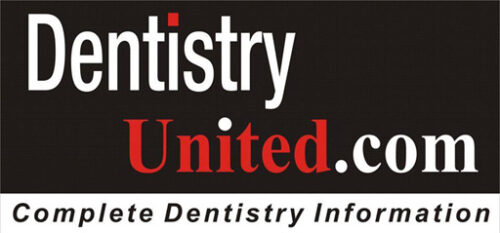- Bandra, Mumbai, India: In this vibrant, cosmopolitan hub, patients value efficiency and warmth. Many expect prompt service due to fast-paced lifestyles but also appreciate personal connections. Greet patients with a warm “Namaste” and a smile, and take a moment to inquire about their well-being or family, a gesture that resonates deeply in Indian culture. Avoid overly formal interactions—patients here often prefer a friendly, approachable demeanor.
- Beijing, China: Respect and professionalism are paramount. Patients often expect a high level of expertise and deference to the dentist’s authority. Use polite forms of address, such as “Mr.” or “Ms.,” and avoid overly casual language. A small bow or nod during greetings shows respect, and providing clear, detailed explanations of procedures aligns with the cultural emphasis on trust and transparency.
- Tokyo, Japan: Japanese patients value precision, cleanliness, and respect for personal space. Bowing slightly during greetings and maintaining a calm, composed demeanor create a sense of trust. Punctuality is critical—ensure appointments start on time. Patients also appreciate minimal physical contact, so explain procedures thoroughly and seek verbal consent before touching.
- Morocco: Moroccan culture emphasizes hospitality and warmth. Greet patients with a heartfelt “As-salamu Alaikum” and offer a comfortable waiting area with refreshments like mint tea, if feasible. Patients often value personal connections, so take time to engage in light conversation about their day or family, while respecting modesty and privacy, especially for female patients.
- Dubai, UAE: In Dubai, patients often expect a premium, high-tech experience paired with exceptional service. Use formal titles like “Mr.” or “Dr.” unless invited to use first names. Multilingual staff who can communicate in Arabic, English, or other languages cater to the diverse population. Small gestures, like offering bottled water or a warm towel, align with the region’s hospitality standards.
- Denmark: Danish patients value equality, simplicity, and directness. Address patients by their first names to create a sense of familiarity, and maintain a transparent, no-nonsense approach to explaining treatments. A cozy, minimalist waiting area with natural light reflects local aesthetics and puts patients at ease.
- Poland: Polish patients appreciate warmth and respect for tradition. A firm handshake and direct eye contact during greetings convey sincerity. Many value personal connections, so asking about their day or acknowledging local holidays (like Christmas or Easter) fosters rapport. Clear communication about costs is also crucial, as transparency is highly valued.
- USA: American patients expect friendliness, efficiency, and clear communication. A warm handshake or a cheerful “Hi, how are you?” sets a welcoming tone. Patients often appreciate being involved in treatment decisions, so provide options and explain benefits clearly. A comfortable, modern waiting area with Wi-Fi or reading materials caters to diverse preferences.
- UK and Ireland: Politeness and humor go a long way. Address patients as “Mr.” or “Ms.” initially, transitioning to first names if they prefer. A cup of tea or coffee in the waiting area aligns with local hospitality norms. Patients value clear explanations and a friendly, slightly informal tone—light banter can ease nerves, especially in Ireland.
- Streamline the Patient Journey: From booking to follow-up, ensure every step is seamless. Use user-friendly online booking systems or multilingual phone support in diverse regions like Dubai or the USA. In Bandra or Tokyo, where time is precious, minimize wait times and communicate delays promptly. A follow-up call or message post-treatment—whether a quick WhatsApp in India or a polite email in Denmark—shows care beyond the chair.
- Train Staff in Empathy and Cultural Sensitivity: Your team is the face of the human touch. Train receptionists, assistants, and hygienists to greet patients warmly, listen actively, and adapt to cultural norms. For example, in Morocco, staff should be prepared to offer extra hospitality, while in Japan —System: they should maintain a professional and reserved demeanor. Role-playing scenarios during training can help staff practice these nuances, ensuring they’re equipped to handle diverse patient expectations.
- Create a Welcoming Environment: The ambiance of your practice sets the tone. In areas like Dubai or Tokyo, patients may expect sleek, high-tech designs, while in Poland or Ireland, a cozy, homely feel resonates more. Regardless of aesthetics, ensure the space is clean, comfortable, and accessible. Small touches like soothing music, pleasant scents, or localized decor (e.g., traditional art in Morocco or minimalist designs in Denmark) enhance the experience.
- Personalize Communication: Tailor your interactions to each patient’s preferences. In the USA, patients may appreciate detailed treatment plans with options, while in China, they might prefer clear, authoritative recommendations. Use patient management software to track preferences, such as language needs in multilingual areas like Dubai or appointment time preferences in fast-paced Bandra.
- Address Anxiety Proactively: Dental anxiety is universal. Train your team to recognize signs of nervousness and respond with empathy. In the UK, a bit of humor might lighten the mood, while in Japan, a calm explanation of each step can reassure patients. Offer distractions like music or TV screens in treatment rooms, and ensure staff check in on patients’ comfort during procedures.
- Solicit and Act on Feedback: Encourage patients to share their experiences through surveys or informal conversations. In cultures valuing directness, like Denmark or the USA, patients may openly share feedback, while in Japan or China, they might be more reserved—offer anonymous options to capture honest input. Use this feedback to refine processes, ensuring continuous improvement.
About the Author
Dr. Syed Nabeel, BDS, D.Orth, MFD RCS (Ireland), MFDS RCPS (Glasgow), is a clinician-scholar whose career spans over two decades at the intersection of orthodontics, neuromuscular dentistry, and digitally integrated diagnostics. As Clinical Director of Smile Maker Clinics Pvt. Ltd., he has pioneered a philosophy of care rooted in anatomical precision, occlusal neurophysiology, and contemporary AI-enhanced workflows. A Diplomate in Orthodontics from Italy and an alumnus of advanced programs at Various International Universiteis , Dr. Nabeel brings a globally benchmarked clinical acumen to the nuanced management of temporomandibular disorders, esthetic rehabilitation, and algorithm-guided orthodontics.
In 2004, he founded DentistryUnited.com, a visionary platform connecting over 40,000 dental professionals through peer learning and collaborative dialogue. His academic drive led to the launch of Dental Follicle – The E-Journal of Dentistry (ISSN 2230-9489), a peer-reviewed initiative now indexed in EBSCO, fostering interdisciplinary scholarship across clinical domains.
A prolific educator, he has contributed to UGC and national broadcast media as a subject expert and regularly speaks at scientific forums, favoring small-group, discussion-based formats that emphasize clinical realism over theoretical abstraction. His ethos remains steadfast: knowledge, when shared freely, multiplies in value. Dr. Nabeel continues to shape the future of dentistry through research, mentorship, and his enduring commitment to elevating practice standards in India and beyond.

